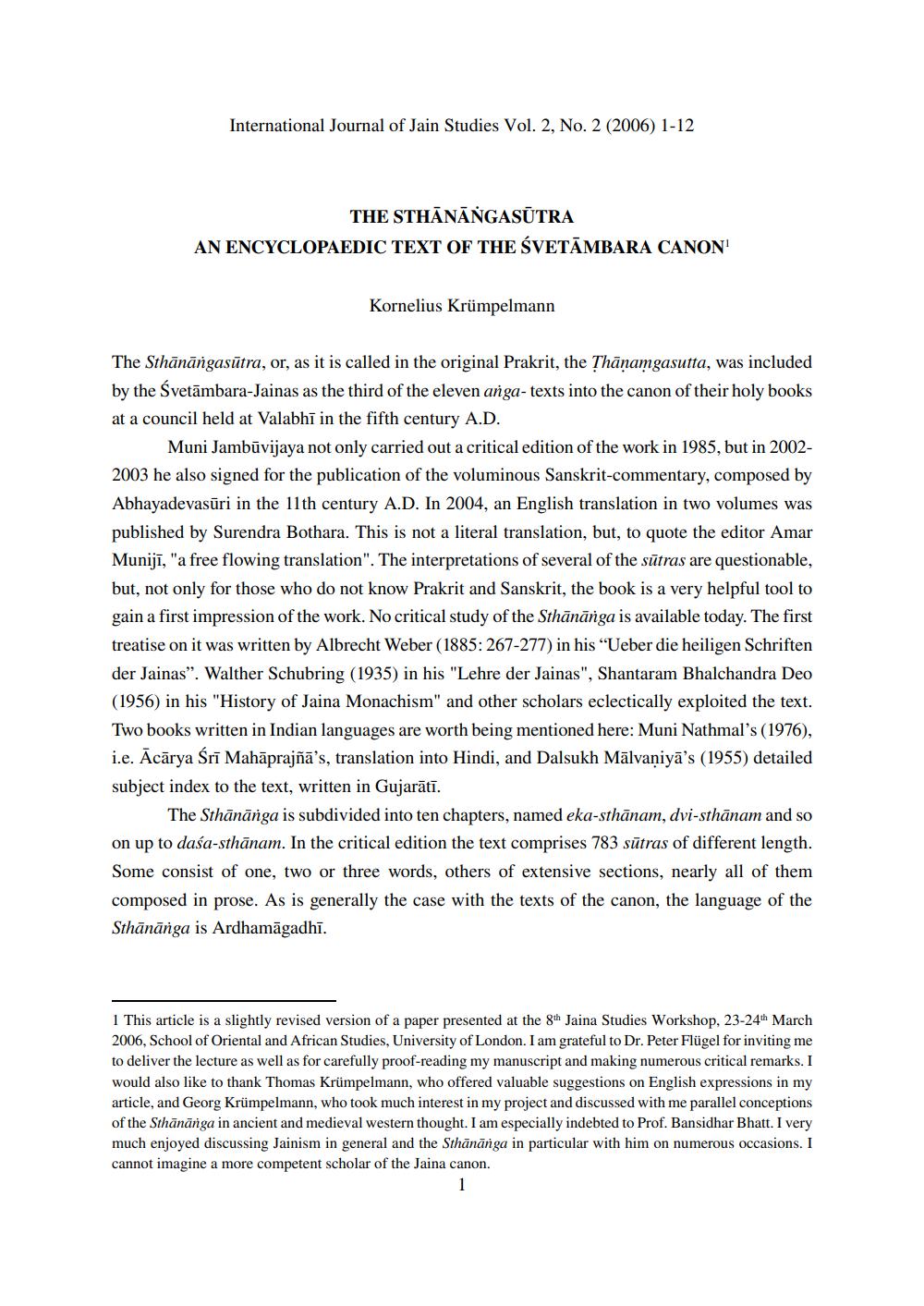________________
International Journal of Jain Studies Vol. 2, No. 2 (2006) 1-12
THE STHANANGASŪTRA
AN ENCYCLOPAEDIC TEXT OF THE SVETAMBARA CANON
Kornelius Krümpelmann
The Sthānangasútra, or, as it is called in the original Prakrit, the Thaṇamgasutta, was included by the Śvetambara-Jainas as the third of the eleven anga- texts into the canon of their holy books at a council held at Valabhi in the fifth century A.D.
Muni Jambūvijaya not only carried out a critical edition of the work in 1985, but in 20022003 he also signed for the publication of the voluminous Sanskrit-commentary, composed by Abhayadevasūri in the 11th century A.D. In 2004, an English translation in two volumes was published by Surendra Bothara. This is not a literal translation, but, to quote the editor Amar Muniji, "a free flowing translation". The interpretations of several of the sutras are questionable, but, not only for those who do not know Prakrit and Sanskrit, the book is a very helpful tool to gain a first impression of the work. No critical study of the Sthänänga is available today. The first treatise on it was written by Albrecht Weber (1885: 267-277) in his "Ueber die heiligen Schriften der Jainas". Walther Schubring (1935) in his "Lehre der Jainas", Shantaram Bhalchandra Deo (1956) in his "History of Jaina Monachism" and other scholars eclectically exploited the text. Two books written in Indian languages are worth being mentioned here: Muni Nathmal's (1976), i.e. Acārya Śrī Mahāprajñā's, translation into Hindi, and Dalsukh Mälvaniya's (1955) detailed subject index to the text, written in Gujarātī.
The Sthānanga is subdivided into ten chapters, named eka-sthānam, dvi-sthānam and so on up to daśa-sthānam. In the critical edition the text comprises 783 sutras of different length. Some consist of one, two or three words, others of extensive sections, nearly all of them composed in prose. As is generally the case with the texts of the canon, the language of the Sthānanga is Ardhamāgadhi.
1 This article is a slightly revised version of a paper presented at the 8th Jaina Studies Workshop, 23-24th March 2006, School of Oriental and African Studies, University of London. I am grateful to Dr. Peter Flügel for inviting me to deliver the lecture as well as for carefully proof-reading my manuscript and making numerous critical remarks. I would also like to thank Thomas Krümpelmann, who offered valuable suggestions on English expressions in my article, and Georg Krümpelmann, who took much interest in my project and discussed with me parallel conceptions of the Sthānanga in ancient and medieval western thought. I am especially indebted to Prof. Bansidhar Bhatt. I very much enjoyed discussing Jainism in general and the Sthānanga in particular with him on numerous occasions. I cannot imagine a more competent scholar of the Jaina canon.
1




